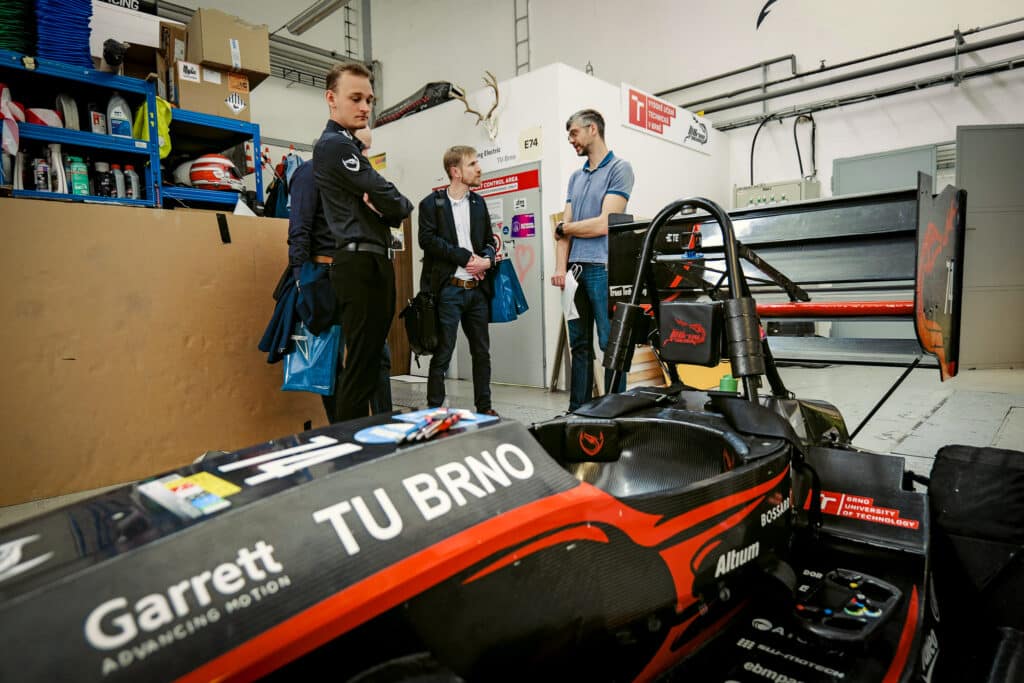Last week, we had the opportunity to visit the Faculty of Mechanical Engineering at Brno University of Technology (BUT), where we met with the Dean, Mr. Jiří Hlinka, and his team to discuss potential collaboration on the development of EduBoxes.
The highlight of the program was a meeting with the student development team behind the electric formula car, a project entirely designed and built by BUT students. This initiative captured our attention as an ideal tool to bridge technical education with real-world experience.
Electric Formula as an Educational Platform
The electric formula car is not just a racing project—it serves as a comprehensive educational platform capable of demonstrating a wide range of engineering topics:
• Composite materials and structural components
• Additive manufacturing (3D printing) and its application in the automotive industry
• Vehicle electronics
• Drive units and software-based control systems
• Simulation, testing, and aerodynamics
Its ability to turn a hands-on project into a tool for explaining complex technical principles inspired us to explore its connection with the EduBox modules we are developing for vocational secondary schools.

A Glimpse into Development
The visit included a tour of the development laboratories, where students work on various components of the car. We gained valuable insights into their development processes, testing methods, and the cross-disciplinary collaborationthat drives their success. We were also inspired by the organization of student teams, which operate at a level comparable to professional engineering departments.
Looking Ahead: A Future Collaboration
We believe that linking academia with practical tools like EduBoxes has the potential to make technical education more efficient and engaging. First ideas have already emerged about how to incorporate the electric formula concept into classroom teaching—and we are excited to see where this joint initiative may lead.
The Moravian-Silesian Technological Academy has long focused on connecting secondary schools, industrial companies, and university research—because innovation happens where knowledge, hands-on experience, and the motivation to learn something new intersect.





